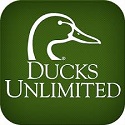 Retrievers are hard-wired to fetch fallen birds. When a retriever sees a bird fall, his natural instinct is to go out and get it. Honing that innate ability so the dog hunts for you and not for himself is the key to the training process. For this reason, the blind retrieve is perhaps the ultimate test of a finished duck dog.
Retrievers are hard-wired to fetch fallen birds. When a retriever sees a bird fall, his natural instinct is to go out and get it. Honing that innate ability so the dog hunts for you and not for himself is the key to the training process. For this reason, the blind retrieve is perhaps the ultimate test of a finished duck dog.
A “blind” or “unseen” is a bird that a dog didn’t see fall. To locate the bird, the dog needs to rely on his handler. This skill comes in handy in a variety of hunting scenarios. For example, when the action is heavy, your dog may be unable to mark each bird that falls. Likewise, your retriever may need help with locating a wing-tipped duck that sails a long way across the marsh or through the timber.
“Teaching a dog to retrieve an unseen is advanced field work,” says Mike Stewart, of Wildrose Kennels in Oxford, Mississippi. “But it isn’t difficult if you have already laid a solid training foundation with skills such as obedience, steadiness, whistle training, casting, and various handling exercises.”
Stewart says there are four parts to running a blind retrieve: lining, handling, hunting, and confidence. Lining is the dog’s ability to take and follow the correct line or direct route to a bird despite barriers and distractions.
Handling involves your ability to control and direct the dog to a fall area. Hunting is the dog’s skill at aggressively searching the area of the downed bird. And confidence is the dog’s trust in both himself and in his handler’s ability to direct him to the bird.
“This is, to a large degree, a trust issue,” Stewart explains. “Your dog must respond positively to your commands. As such, he must have confidence that something good awaits when you send him in the direction of a downed bird. This exercise epitomizes the importance of a strong partnership between handler and retriever.” Continue reading – http://www.ducks.org/hunting/retriever-training/mastering-the-blind-retriever?poe=whatsnew
